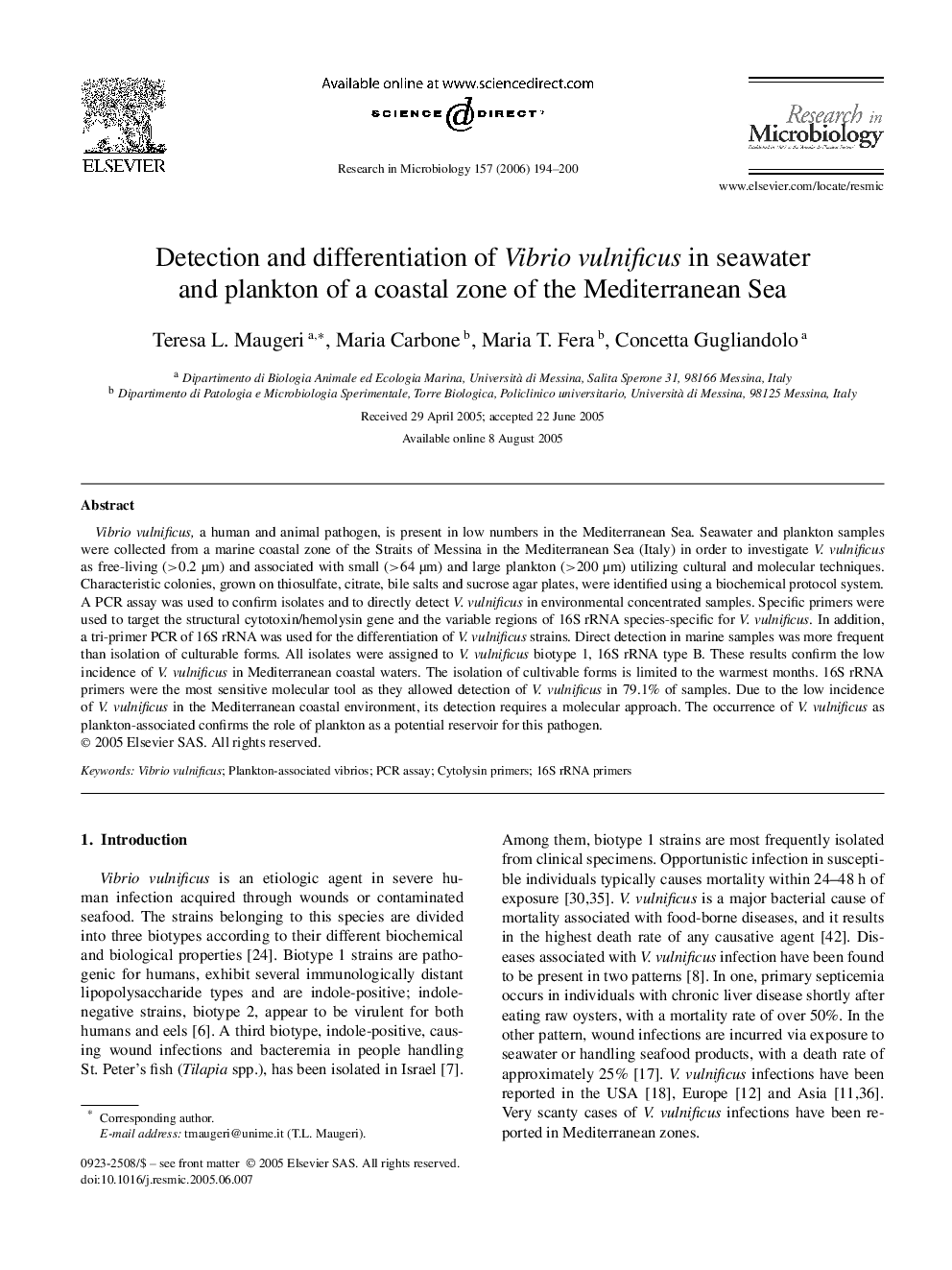| Article ID | Journal | Published Year | Pages | File Type |
|---|---|---|---|---|
| 4359530 | Research in Microbiology | 2006 | 7 Pages |
Vibrio vulnificus, a human and animal pathogen, is present in low numbers in the Mediterranean Sea. Seawater and plankton samples were collected from a marine coastal zone of the Straits of Messina in the Mediterranean Sea (Italy) in order to investigate V. vulnificus as free-living (>0.2 μm) and associated with small (>64 μm) and large plankton (>200 μm) utilizing cultural and molecular techniques. Characteristic colonies, grown on thiosulfate, citrate, bile salts and sucrose agar plates, were identified using a biochemical protocol system. A PCR assay was used to confirm isolates and to directly detect V. vulnificus in environmental concentrated samples. Specific primers were used to target the structural cytotoxin/hemolysin gene and the variable regions of 16S rRNA species-specific for V. vulnificus. In addition, a tri-primer PCR of 16S rRNA was used for the differentiation of V. vulnificus strains. Direct detection in marine samples was more frequent than isolation of culturable forms. All isolates were assigned to V. vulnificus biotype 1, 16S rRNA type B. These results confirm the low incidence of V. vulnificus in Mediterranean coastal waters. The isolation of cultivable forms is limited to the warmest months. 16S rRNA primers were the most sensitive molecular tool as they allowed detection of V. vulnificus in 79.1% of samples. Due to the low incidence of V. vulnificus in the Mediterranean coastal environment, its detection requires a molecular approach. The occurrence of V. vulnificus as plankton-associated confirms the role of plankton as a potential reservoir for this pathogen.
